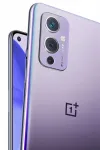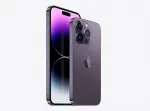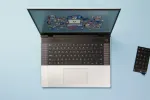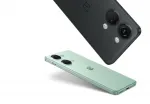The LG G Flex is a smartphone with unique and revolutionary features that make it stand out from other devices in its market. Its self-healing back panel coating adds to the durability of the device, making it more resistant to scratches and small damages. The phone, produced by the reputable brand LG, was first announced in October 2013 and released the following month.
The body of the LG G Flex is made of high-quality materials, including a glass front (Corning Gorilla Glass 2), plastic back, and plastic frame. Its dimensions measure 160.5 x 81.6 x 8.7 mm (6.32 x 3.21 x 0.34 in) and it weighs 177 g (6.24 oz), making it sleek and lightweight for comfortable handling. Its SIM card slot is of the Micro-SIM size, and it comes in only one color - Titan silver.
In terms of memory and storage, the LG G Flex offers 32GB of internal storage and 2GB of RAM, powered by an eMMC 4.5 technology. Unfortunately, there is no option to expand the storage with a memory card, so users must rely on the available internal storage space.
The phone boasts a large 6.0-inch curved P-OLED display with a resolution of 720 x 1280 pixels and a 16:9 aspect ratio, resulting in a pixel density of about 245 pixels per inch (ppi). The display is protected by Corning Gorilla Glass 2, ensuring the screen stays in pristine condition for longer.
The LG G Flex runs on the Android 4.2.2 (Jelly Bean) operating system, upgradable to 4.4.2 (KitKat), and is powered by a quad-core 2.26 GHz Krait 400 processor with a Qualcomm MSM8974 Snapdragon 800 (28 nm) chipset, providing users with a seamless and fast performance. The device also has an Adreno 330 GPU, allowing for smooth graphics and gaming experiences.
For communication and connectivity, the LG G Flex offers various options, including NFC, Bluetooth 4.0, USB microUSB 2.0 (with OTG support), Wi-Fi 802.11 a/b/g/n/ac (with dual-band, Wi-Fi Direct, DLNA, and hotspot capabilities), stereo FM radio (with RDS), and GPS and GLONASS positioning. It also has an infrared port, making it possible to control other devices with the phone.
The LG G Flex features a 13 MP single-lens main camera with an f/2.4 aperture, autofocus, and LED flash. It is capable of recording videos in 1080p at 60 frames per second (fps) with HDR and stereo sound recording capabilities, as well as taking stunning and detailed photos with its various features, including panorama and HDR. The front-facing camera boasts a 2.1 MP resolution and can record 1080p videos at 30fps, making it perfect for video calls and selfies.
In terms of connectivity, the LG G Flex supports the use of a DMB (Digital Multimedia Broadcasting) TV tuner, making it possible to watch television directly on the phone in regions where this feature is available. It also has various sensors, including an accelerometer, gyro, proximity, and compass.
The battery life of the LG G Flex is impressive, with a Li-Po 3500 mAh non-removable battery, providing up to 720 hours of standby time and up to 15 hours of talk time. It also supports fast charging, ensuring users can quickly get back to using their device.
Finally, the LG G Flex was launched in various regions but has since been discontinued. Its price was approximately 360 EUR at the time of its launch, and it was available in various models, including LS995, D955, D959, D958, D950, F340, F340L, and LGL23. The phone is also SAR (Specific Absorption Rate) compliant, with the EU standards for head and body set at 0.38 W/kg and 0.41 W/kg, respectively.
Overall, the LG G Flex is an innovative and high-quality device, offering users features such as a self-healing back panel, a large curved display, and a powerful processor. Its impressive battery life and various connectivity options make it an excellent choice for those seeking a reliable and efficient smartphone. Despite being discontinued, the LG G Flex remains one of the most unique and highly regarded devices produced by LG.









